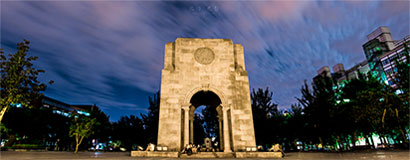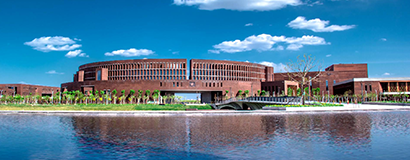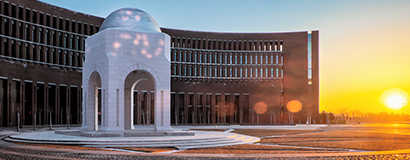Recently Dr. He Jie, an associate professor from Tianjin University’s School of Architecture, has finished the year 2019 site working report of Lo Manthang, the ancient walled city in UNESCO World Heritage tentative list and the old capital of Mustang of Nepal.It is the third time in the past two years that staff and students of Tianjin University have conductedsite surveyson the Corridor No. 41 of the Silk Roads in South Asia.

Figure 1 Landscape of Upper Mustang of Nepal
Introduction of Mustang
Located in the northern most boundary of Nepal, Mustang is surrounded by Manang (east), Myagdi (south), Dolpa (west) in Nepal, and adjacent to China’s Tibetan border of Zhongba Zong in the north. The economic-cultural route in Mustang is one of the three South Asian Silk Roads identified by the UNESCO Heritage Centre. As the last independent kingdom in Nepal, Mustang was not open to foreign tourists until 1992. Once opened, its magnificent natural landscape and diverse historical and cultural heritage attracted worldwide tourists and now Mustang is considered “trekkers’ heaven”. However, its harsh environment, difficulties in accessibility and expensive entry permit has become constraints of in-depth cultural heritage studies and conservation.
Working on the South Asian Silk Roads
In May 2018, as a research fellow and representative of the Silk Roads Cultural Landscape Research Center of Tianjin University, Dr. He Jie was invited by the Oriental Cultural Heritage Sites Protection Alliance (OCHSPA) for their first field investigation delegate to the cultural heritage documentation of Lo Manthang city. Based on very limited basic data and preliminary field work of the first survey, the TJU team has established a geographical information system (GIS) database of the cultural heritage of corridor No. 41 of the South Asian Silk Roads and produced the most accurate city map of the Lo Manthang. The research results have been highly appreciated by the heritage management bureaus of both Nepal and China, as well as the international academic community.

Figure 2 City map of Lo Manthang drawn by TJU team
Dr. He was invited to the field work again by OCHSPA for further investigation near Lo Manthang from the end of April to mid- May. Dozens of building ruins and associated landscape in the corridor north of the walled city were inspected in this survey. Almost immediately after the second trip, Northwest University (NWU), located in Xi’an, China, which has been assigned as the chief archaeology international partner by the China National Cultural Relics Bureau was also proposing their first archaeological site survey in Mustang district. As the team most familiar with Mustang cultural heritage in Mainland China, TJU’s School of Architecture was invited to join. Considering the significance of this mission, Dr. He accepted the offer even at her own expense. The joint archaeological site working team of Northwest University and Tianjin University is the first academic team from China to work on the South Asian Silk Roads in Nepal. During the 17-day survey, the team explored the region by investigating Tibetan Buddhist monasteries, chortens, ancient palaces, fortress ruins, caves and rock art along the corridor, while interviewing monks, residents and local government officers. After the site works, the team also visited the Department of Archaeology of Nepal in Kathmandu to report and for collaboration discussion. The future multidisciplinary research proposed by the joint archaeological team was highly valued and agreed upon by the Nepalese officers.

Figure 3 Dr. He Jie (left) is sampling wood remain in a ruin north of Lo Manthang.

Figure 4 Group photo of the site work team in front of Kunza Choling Gompa near Chursang, Upper Mustang
Contributing to the “Belt and Road Initiatives”
During the archaeological team's investigation in Mustang, on October 12, President Xi Jinping of China met with Nepalese President Bhandari in Kathmandu. The two sides jointly announced that both countries would establish strategic partnerships to promote development and prosperity. It does consolidate the cooperation in archaeology and heritage site works and studies in Mustang by China and Nepal.
The research team is now planning the missions cooperating with both OCHSPA and Northwest University next year for conducting more detailed investigations and surveying of the cultural heritage resources in Upper Mustang and Lo Manthang in spring and autumn of 2020.
By the School of Architecture
Editors: Eva Yin & Doris Harrington






